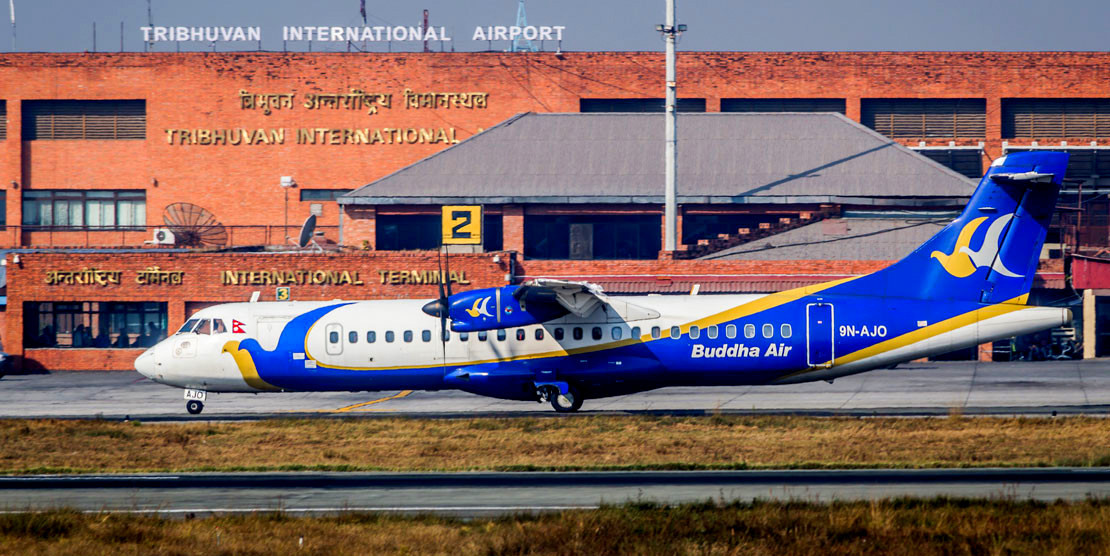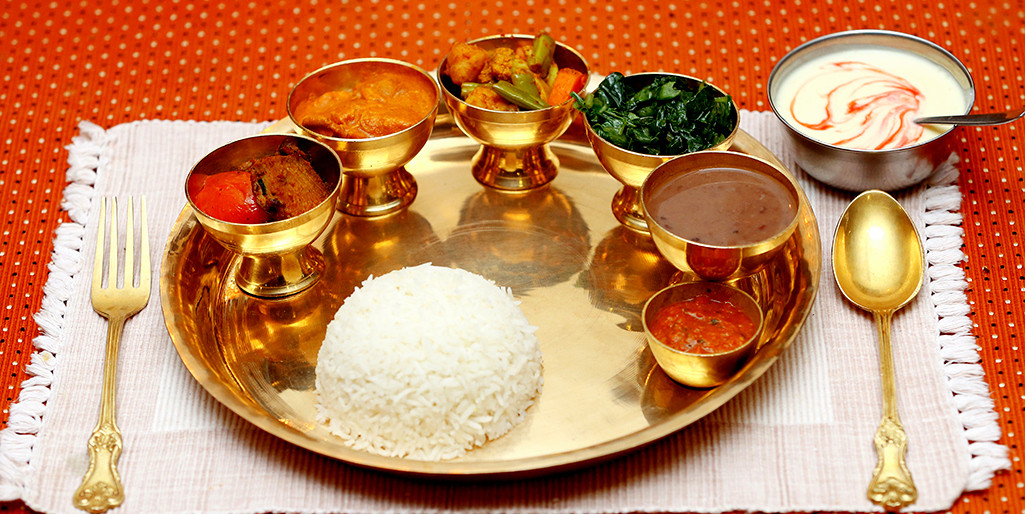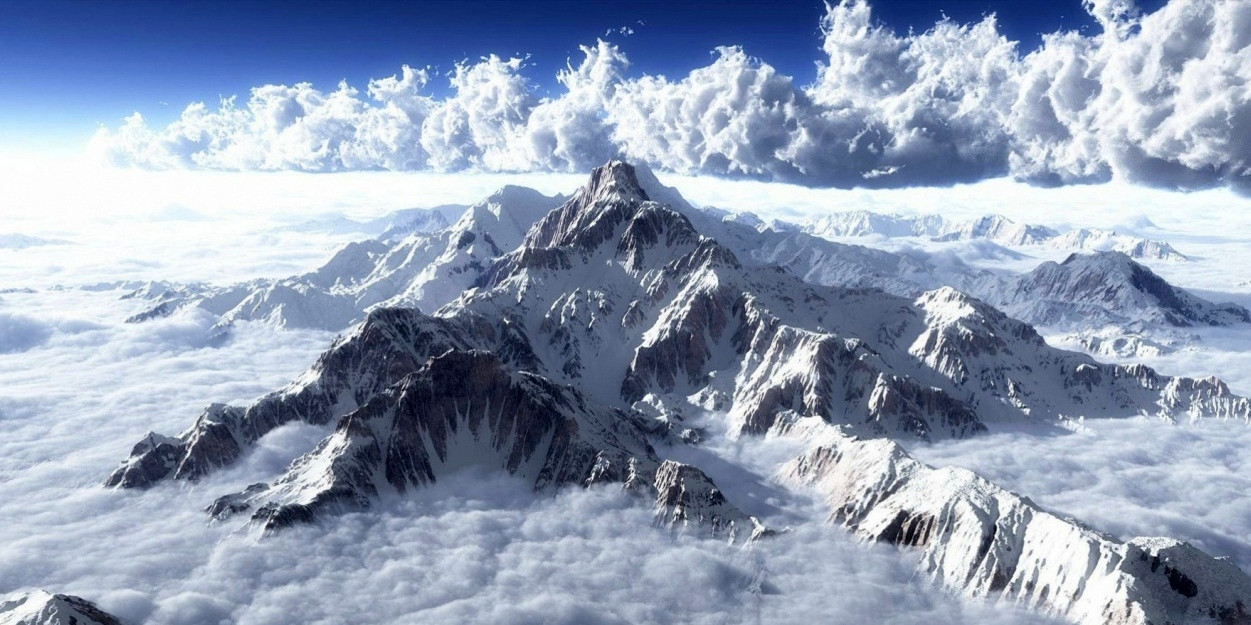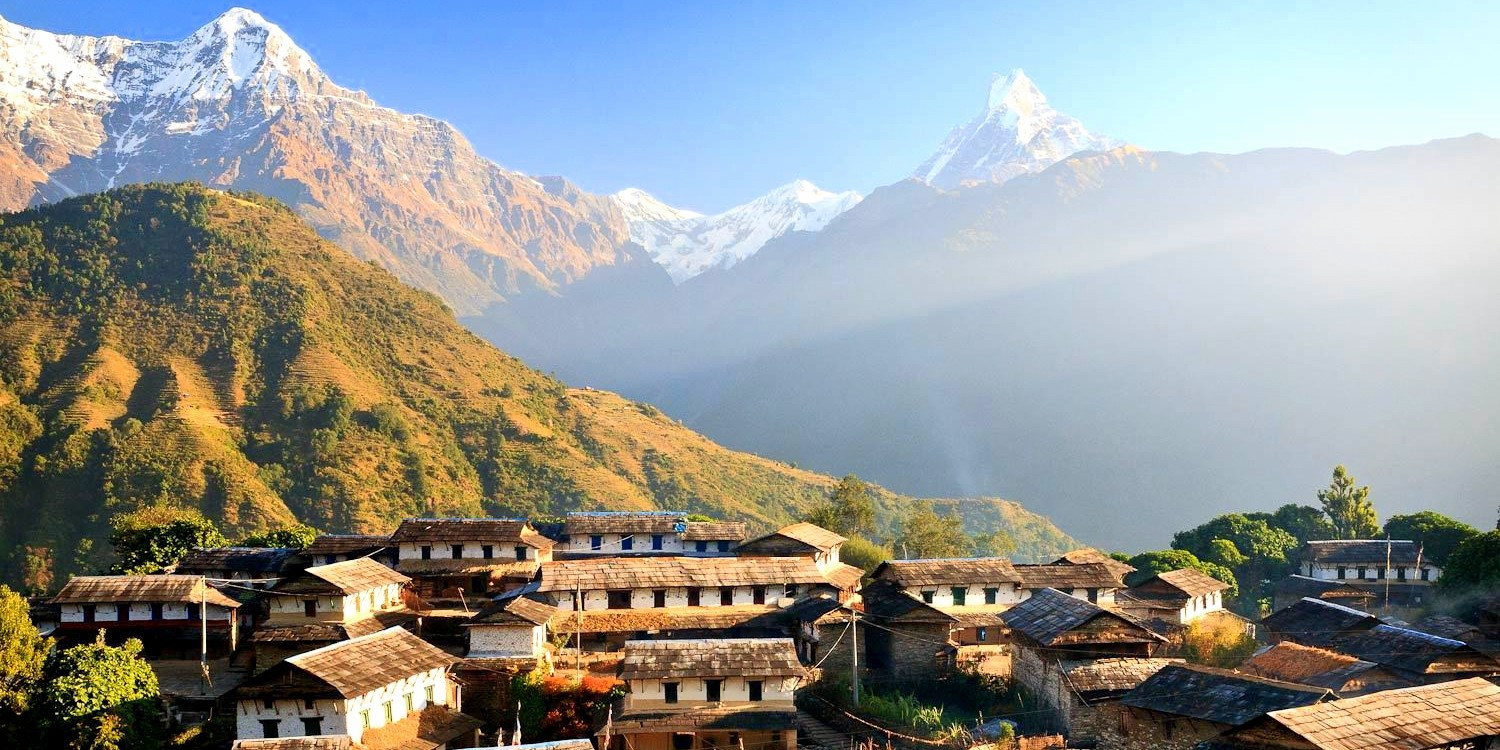When planning your trip to Nepal, understanding the Nepal visa requirements is crucial to ensure a smooth entry and enjoyable stay. Here are the essential details you need to know:
Before traveling, it is advisable to check for any updates on visa policies or additional entry requirements, especially in light of potential changes due to global health advisories. Planning and having the correct documentation ready will ensure a hassle-free start to your exploration of Nepal.
Choosing the best time to visit Nepal largely depends on what activities you plan to engage in and what experiences you hope to have. Nepal offers distinct seasons, each with its own attractions and weather patterns.
Ultimately, the best time to visit Nepal depends on your personal preferences, the activities you're interested in, and your tolerance for varying weather conditions.
Traveling to Nepal offers a fantastic opportunity to experience its varied landscapes, from high mountains to lush valleys. However, ensuring your safety is paramount for a smooth and enjoyable trip. Here are some essential Nepal travel safety tips:
Following these safety tips will help ensure that your trip to Nepal is safe and filled with positive experiences. Whether you're exploring ancient temples, trekking through the Himalayas, or soaking in the vibrant city life, a little caution goes a long way.
Understanding and respecting the cultural etiquette of Nepal can greatly enhance your experience and interaction with the local people. Here are essential guidelines to help you navigate Nepalese social customs:
By adhering to these cultural etiquette tips, you will show your respect for the Nepalese culture and foster meaningful connections with the local people, enhancing the richness of your travel experience in Nepal.
Health Advice for Nepal Travel
Traveling to Nepal offers an exciting opportunity to explore stunning landscapes and vibrant cultures, but it also requires careful health planning to ensure a safe and enjoyable trip. Here are some essential health tips for traveling to Nepal:
Vaccinations
-
Before departure, consult with a travel health clinic or your doctor to receive any necessary vaccinations. Commonly recommended vaccines for travelers to Nepal include Hepatitis A, Typhoid, and Tetanus. Depending on your itinerary, vaccines for Japanese Encephalitis, Rabies, and Hepatitis B might also be recommended.
-
Ensure that your routine vaccinations, such as MMR (measles, mumps, rubella), polio, and influenza, are up to date.
Altitude Sickness
-
Many of Nepal's attractions, including trekking routes, are at high altitudes. Acute Mountain Sickness (AMS) can be a serious health concern. To prevent AMS, ascend gradually to allow your body time to acclimatize, and consider spending a few days at a moderate elevation before climbing higher.
-
Recognize the symptoms of altitude sickness, which include headache, nausea, dizziness, and fatigue. If symptoms worsen, descend to a lower altitude immediately and seek medical help.
Water and Food Safety
-
Drink only bottled, boiled, or treated water. Avoid tap water, ice cubes, and fountain drinks as they may cause stomach illnesses.
-
Eat foods that are thoroughly cooked and served hot. Avoid raw vegetables and fruits unless you can peel them yourself. Street food should be consumed with caution, particularly if the hygiene standards appear low.
Personal Hygiene
-
Wash your hands regularly with soap and water, especially before eating or after visiting the bathroom. If soap and water aren't available, use a hand sanitizer containing at least 60% alcohol.
-
Carry a hand sanitizer and disinfectant wipes for occasions where water may not be readily available.
Insect Bite Prevention
-
In some areas of Nepal, there are risks of diseases transmitted by insects. Use an EPA-registered insect repellent containing DEET, picaridin, or oil of lemon eucalyptus.
-
Wear long-sleeved shirts and trousers, and consider treating clothing with permethrin for added protection, especially if you're traveling in rural or jungle areas.
Travel Insurance
- Ensure you have comprehensive travel insurance that covers medical evacuation. Health facilities in Nepal vary in quality, especially in remote areas, and serious health issues may require medical evacuation to a country with better facilities.
Medical Kit
- Bring a basic travel health kit that includes medication for diarrhea, antibiotic ointment, antiseptic wound cleaner, adhesive bandages, and any prescription medications in their original packaging, accompanied by your doctor’s prescription.
Local Health Care
- Know the location of reputable clinics and hospitals in the areas you'll be visiting. The U.S. Embassy or your consulate can provide a list of local English-speaking doctors and hospitals.
Following these health tips can help you avoid common travel-related illnesses and ensure that your visit to Nepal remains safe and healthy. Whether you’re trekking through the Himalayas or exploring bustling Kathmandu, staying vigilant about your health will enhance your overall travel experience.
Transport Options in Nepal
Navigating through Nepal offers various transportation options, each catering to different needs and preferences. Understanding what's available can help you plan your travel efficiently within this diverse terrain. Here are the main transport options in Nepal:

-
Domestic Flights: Nepal's rugged topography makes air travel a popular option for quickly reaching remote areas quickly. Tribhuvan International Airport in Kathmandu is the main hub for domestic flights, connecting to major cities like Pokhara, Lukla, and Bharatpur. Several local airlines offer flights to less accessible parts of the country, reducing travel time significantly compared to road transport.
-
Buses: Buses are the most common form of public transportation for both locals and tourists traveling between cities. Services range from basic local buses to more comfortable tourist buses. The latter are recommended for long-distance travel as they are often more reliable and comfortable. Microbuses are also a popular, albeit more cramped, option for shorter distances.
-
Private Vehicles: Hiring a private vehicle with a driver is a flexible and comfortable way to explore Nepal, especially for areas not well-served by public transport. It can be more expensive but offers the convenience of traveling at your own pace and making stops as desired.
-
Motorbikes and Scooters: Renting a motorbike or scooter can be an adventurous way to tour around, particularly in and around urban areas like Kathmandu and Pokhara. It provides freedom to navigate the traffic and explore more freely, though it's essential to be cautious given the often chaotic traffic and varying road conditions.
-
Rickshaws: For short distances in urban areas, cycle rickshaws and auto-rickshaws (often called tempos) are a practical option. They are affordable and can navigate through narrow streets where larger vehicles cannot go.
-
Taxis: Taxis are widely available in major cities and can be hailed on the street. It's advisable to agree on the fare before starting your journey as meters are not always used or adhered to by drivers.
-
Local Trains: There is a limited railway system in Nepal, primarily in the southern parts of the country connecting Janakpur with the Indian border. While not a major mode of transport for most tourists, it can be an interesting experience for those looking to explore this region.
By understanding and choosing the right transportation options, you can enhance your travel experience in Nepal, making it more convenient and enjoyable to explore the rich landscapes and cultural heritage of this unique country.
Nepal Local Cuisine Guide
Nepal's cuisine is as diverse as its landscapes, with flavors and dishes that reflect its ethnic diversity and geographical variety. Here’s a guide to the local cuisine in Nepal, highlighting must-try dishes and culinary experiences that make Nepalese food truly unique.

Dal Bhat: The quintessential Nepali dish, Dal Bhat is a staple for most Nepalese. It consists of lentil soup (dal) served over boiled rice (bhat), accompanied by vegetable curries, pickled dishes (achar), and sometimes meat like chicken or goat. This hearty meal is a staple across Nepal and provides the necessary sustenance for long treks.
Momos: These Tibetan-style dumplings have become one of Nepal's most beloved foods. Momos are filled with either meat or vegetables and then steamed or fried. They are usually served with a spicy dipping sauce made from tomatoes and other spices. Momos are a popular snack or meal and can be found from street vendors and restaurants alike.
Thukpa: A hearty noodle soup that originates from the Tibetan plateau, Thukpa is popular in Nepalese cuisine. It typically features meat or vegetables, noodles, and a savory broth, making it especially popular in the colder, mountainous regions of Nepal.
Sel Roti: This traditional homemade, sweet, ring-shaped rice bread is a popular treat during festivals and special occasions. Sel Roti is crispy and slightly sweet, often enjoyed with yogurt or vegetable curries.
Newari Cuisine: Originating from the Newar community of the Kathmandu Valley, this cuisine offers unique dishes like Bara (savory rice-flour pancakes) and Chatamari (often dubbed 'Nepali pizza'). Newari cuisine is also known for its variety of meats, including buffalo.
Gundruk: A fermented leafy green vegetable, Gundruk is a significant source of minerals during the off-season in rural Nepal. It's typically served as a side dish, soup, or pickle and has a slightly sour taste.
Yomari: Another delicacy from the Newar community, Yomari consists of rice flour dough shaped into dumplings and filled with a sweet mixture of coconut, molasses, and sesame seeds. It's traditionally made during the Yomari Punhi festival, marking the end of the rice harvest.
Beverages
-
Chiya (Tea): Nepali milk tea, often spiced with ginger and cardamom, is a staple in Nepalese households.
-
Tongba: A traditional and indigenous alcoholic beverage made from fermented millet, served hot and drunk through a bamboo straw.
-
Raksi: A strong distilled alcohol made from rice or millet, commonly consumed during festivals and celebrations.
Tips for Eating in Nepal
-
Street Food: While tempting, be cautious with street food. Opt for busy stalls where high turnover means food is more likely to be fresh.
-
Water Safety: Stick to bottled water for drinking and avoid salads or fruits that may have been washed in untreated water.
Exploring Nepalese cuisine offers a direct route to experiencing the country’s culture and traditions. Each dish not only represents a part of Nepal's culinary heritage but also tells the story of its diverse communities and landscapes. Enjoy your culinary journey through Nepal!
Nepal Currency Tips
Handling money in Nepal requires some know-how to ensure smooth transactions and avoid any unnecessary hassles. Here are some essential currency tips for Nepal that travelers should keep in mind:
-
Currency Information: The official currency of Nepal is the Nepalese Rupee (NPR). Notes come in denominations of 1, 2, 5, 10, 20, 50, 100, 500, and 1000 rupees. Coins, although less commonly used, are available in denominations of 1, 2, and 5 rupees.
-
Cash is King: Cash is the most widely accepted form of payment, especially outside major cities. While cards are increasingly accepted in Kathmandu and Pokhara, especially at upscale restaurants, hotels, and shops, many smaller establishments and local markets still operate exclusively with cash.
-
ATMs: ATMs are readily available in major cities and towns but can be scarce once you venture into more rural or remote areas. ATMs in Nepal sometimes run out of money or may not accept foreign cards, so it’s wise to withdraw enough cash when in larger cities.
-
Currency Exchange: It’s easy to exchange major currencies like USD, EUR, and GBP in Nepal. Currency exchange services are available at airports, hotels, and numerous exchange counters throughout major cities. Always check for competitive rates and ensure that you receive an official receipt for your transaction.
-
Credit Cards and Traveler’s Cheques: Credit card usage is growing but isn't universally accepted. Expect a service charge of around 3-4% on transactions made with credit cards. Traveler’s cheques can be cashed at major banks but are less convenient than cash and credit cards due to fewer acceptance locations and additional processing fees.
-
Inform Your Bank: Before traveling, inform your bank of your travel plans to avoid any security blocks on your ATM cards. It's also a good idea to inquire about international fees and exchange rates provided by your bank.
-
Carrying Money: Carry money in a secure and concealed money belt or neck pouch. Keep small denominations handy for everyday expenses while keeping larger bills tucked away. This not only helps in easier transactions but also assists in not showing large amounts of cash publicly.
-
Be Cautious of Counterfeit Notes: Be vigilant when accepting large denomination notes, particularly in busy environments like markets or street vendors, where counterfeit notes may be more common.
-
Budgeting: Nepal is generally a cost-effective destination. However, allocating your budget according to planned activities, accommodation preferences, and travel style is essential. Remember, remote area expeditions, such as trekking, might require more cash due to the lack of ATMs and card facilities.
By keeping these currency tips in mind, you can navigate Nepal’s financial landscape with confidence, ensuring a smooth and enjoyable trip to this beautiful country.
Packing List for Nepal
When packing for a trip to Nepal, it's crucial to consider the activities you plan to engage in, the varying climates across different regions, and the cultural norms of the country. Here’s a detailed packing list to ensure you’re well-prepared for your adventure:
Essential Documents
-
Passport (with visa if applicable)
-
Travel insurance details
-
Flight tickets
-
Emergency contacts and addresses
-
Photocopies of important documents (keep separate from originals)
-
Maps and travel guides
Clothing
-
Layered clothing for varying temperatures: base layers, insulating layers, and a waterproof outer layer.
-
Lightweight trekking pants and long-sleeve shirts for hiking.
-
A warm jacket for chilly evenings, especially in higher altitudes.
-
Thermal underwear for cold weather, particularly if trekking.
-
Comfortable walking shoes for city exploration and sturdy hiking boots if trekking.
-
Hat, gloves, and scarf for high-altitude areas.
-
Light raincoat or poncho, especially during the monsoon season (June to August).
-
Modest clothing for visiting religious sites (shoulders and knees should be covered).
Gear and Equipment
-
Backpack or daypack with rain cover.
-
Sleeping bag (if trekking; some treks require you to bring your own).
-
Trekking poles (optional but helpful for challenging hikes).
-
Headlamp or flashlight with extra batteries.
-
Sunglasses and sunscreen (SPF 50+).
-
Water bottle or hydration system, possibly with a water purification method like tablets or a filter.
Health and Hygiene
-
First aid kit including bandages, antiseptics, and blister treatment.
-
Personal medications and copies of prescriptions.
-
High-altitude sickness pills (if traveling to high elevations).
-
Insect repellent (DEET-based).
-
Hand sanitizer and wet wipes.
-
Travel-sized toiletries, including toothbrush, toothpaste, and biodegradable soap.
-
Toilet paper (as some restrooms might not provide it).
Electronics
-
Camera with extra batteries and memory cards.
-
Universal travel adapter for charging devices.
-
Mobile phone and charger.
-
Portable power bank.
Miscellaneous
-
Travel journal and pen for documenting your experiences.
-
Snacks like protein bars or trail mixes, especially for long hikes.
-
Books or an e-reader for leisure time.
-
Earplugs and a sleep mask for better sleep during travel or in noisy accommodations.
By packing appropriately, you can ensure a comfortable and fulfilling trip to Nepal, whether you're exploring its vibrant cities, undertaking scenic treks, or engaging in cultural activities. This list aims to cover all bases, preparing you for a wide range of experiences in this diverse and beautiful country.
Nepal Trekking Guide
Trekking in Nepal is a premier adventure for many travelers, offering an opportunity to experience some of the most breathtaking landscapes on Earth. However, navigating the trails and ensuring a safe and enjoyable journey requires careful planning and preparation. Here is a comprehensive Nepal trekking guide to help you get the most out of your trekking adventure.
Choosing a Trek
-
Popular Treks: The Everest Base Camp and Annapurna Circuit are among the most famous treks in Nepal, offering spectacular views and challenging hikes. These routes can be crowded during peak seasons.
-
Off-the-Beaten-Path Treks: For a more solitary experience, consider the Manaslu Circuit, Upper Mustang, or the Dolpo region. These areas offer unique landscapes and cultural experiences with fewer tourists.
-
Trek Duration: Treks can range from a few days to several weeks. Assess your time availability and fitness level when choosing your trek.
Best Time to Trek
-
Pre-Monsoon (Spring): March to May offers warm weather and the blooming of rhododendrons and other flowers, especially in the Annapurna region.
-
Post-Monsoon (Autumn): September to November is considered the best time to trek in Nepal due to clear skies and stable weather, offering excellent visibility.
Preparing for Your Trek
-
Physical Preparation: Depending on the trek's difficulty, start an exercise regimen months in advance, focusing on cardiovascular fitness and leg strength.
-
Gear and Clothing: Invest in good quality trekking boots, a warm sleeping bag, layers of clothing for variable temperatures, a waterproof jacket, and a comfortable backpack. Trekking poles can also be a helpful addition.
- Permits: Most trekking areas in Nepal require permits, such as the TIMS (Trekkers’ Information Management System) card and regional conservation area permits. Arrange these through your trekking agency or at the Nepal Tourism Board in Kathmandu or Pokhara.
Health and Safety
-
Altitude Sickness: Understand the signs of altitude sickness and know that the only cure is to descend. Acclimatize properly by planning gradual ascents and incorporating rest days in your itinerary.
-
Travel Insurance: Ensure that your travel insurance covers high-altitude trekking and possible helicopter evacuation in case of severe health issues.
-
Guides and Porters: Hiring knowledgeable guides and porters can enhance your trekking experience. They are invaluable for their local knowledge, language skills, and assistance in emergencies.
On the Trek
-
Stay Hydrated: Drink at least 3-4 liters of water daily to help prevent altitude sickness.
-
Respect Local Culture: Be considerate of local customs and traditions. Dress modestly, ask permission before taking photos, and contribute to the local economy by buying local goods and services.
-
Leave No Trace: Maintain the pristine nature of the Himalayas by carrying out all your trash, avoiding single-use plastics, and respecting wildlife.
After the Trek
-
Recovery: Allow a few days for your body to recover before flying home or engaging in other strenuous activities.
-
Cultural Exploration: Spend some time in Kathmandu, Pokhara, or other towns exploring Nepalese culture and cuisine.
Trekking in Nepal is not just about enduring physical challenges; it’s also an enriching cultural experience that can be a profound personal journey. With the right preparation, respect for the environment and local cultures, and a positive attitude, your trek in Nepal will be an unforgettable adventure.
As you prepare for your journey to Nepal, familiarizing yourself with essential information like Nepal visa requirements, best time to visit, safety tips, cultural etiquette, health precautions, and transport options will greatly enhance your experience. Nepal offers a unique combination of adventure, culture, and natural beauty. From the high peaks of the Himalayas to its rich cultural festivities, being well-prepared ensures a more enjoyable and respectful visit.
By understanding local customs, ensuring your safety, and embracing the spirit of adventure, you're set for a memorable trip. Keep these tips in mind to navigate Nepal responsibly and safely, and make the most of your time in this majestic country. Safe travels and Namaste!
FAQs for Things to know about Nepal before traveling
Q: Do I need a visa to visit Nepal?
A: Yes, most travelers require a visa to enter Nepal. You can obtain a visa on arrival at Tribhuvan International Airport in Kathmandu and at certain land border crossings, or you can apply for one in advance through a Nepalese embassy or consulate.
Q: What is the best time to visit Nepal?
A: The best times to visit Nepal are during the spring (March to May) and autumn (September to November) seasons. These months offer favorable weather for trekking and exploring, with clear skies and moderate temperatures.
Q: Is Nepal safe for travelers?
A: Nepal is generally safe for travelers. However, it's important to be cautious of petty theft in crowded areas, travel with reputable agencies, and stay updated on local advisories.
Q: What should I pack for a trip to Nepal?
A: Your packing list should include layers for varying temperatures, sturdy trekking boots if you plan to hike, sun protection, a first aid kit, and any necessary medications. Don't forget important documents like your passport, visa, and travel insurance information.
Q: What are the must-try foods in Nepal?
A: Don’t miss out on traditional dishes such as Dal Bhat (rice and lentils), Momos (dumplings), and Thukpa (noodle soup). These dishes provide a taste of Nepal's culinary diversity.
Q: How should I handle money in Nepal?
A: Cash is widely used in Nepal, especially in rural areas. It’s advisable to carry small denominations for everyday expenses. ATMs are available in larger cities, but always have some cash on hand as backup.
Q: Can I drink tap water in Nepal?
A: It is not safe to drink tap water in Nepal. Stick to bottled water or treat tap water with purification tablets or filters before drinking.
Q: What are some cultural etiquette tips for visiting Nepal?
A: Dress conservatively, especially when visiting temples. Always remove your shoes before entering someone’s home or a place of worship. Use your right hand for eating and exchanging items, as the left is considered unclean.
Q: What is the situation with altitude sickness in Nepal?
A: Altitude sickness is a risk in higher elevations. Ascend gradually to allow your body time to acclimatize, stay hydrated, and consider carrying medication for altitude sickness as a precaution.
Q: Are there good facilities for tourists in Nepal?
A: Tourist facilities vary by location. Major cities like Kathmandu and Pokhara offer a range of accommodations from budget to luxury, along with diverse dining options. However, facilities can be more basic in remote areas and trekking routes.
For details on Nepal Tour and packages.
If you are looking for trip customisation and information regarding your possible trip to Nepal, India, Bhutan, Dubai etc. Get in touch with us via Email.





